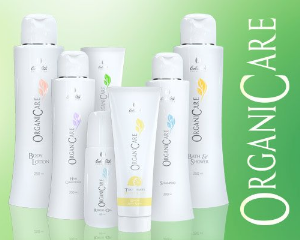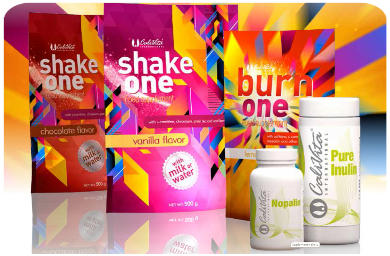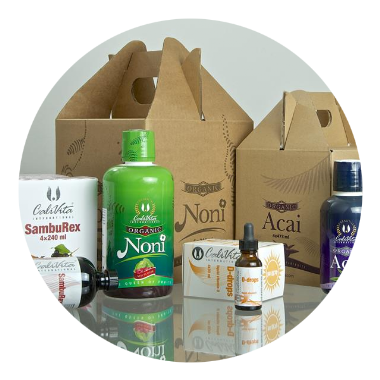Bibliografia
Menu
Piśmiennictwo
- Anderson J.J., Ambrose W.W., Garner S.C.: Proc. Soc. Exp. Biol. Med. 217, 345; 1998.
- Asahi K.I., Ono I., Kusakabe H., Nakamura G., Isono K.: J. Antibiot. 34, 919; 1981.
- Ashwell M., Bussell G., Clasen L., Egainton J., Gibson S., Govindji H., Wilcook F., Mc Clenaghan J. Uzdrawiająca moc witamin, minerałów i ziół; The Reader’s Digest Association Limited, London 2000.
- Axford J. Choroby wewnętrzne {Medicine}; Wyd. Wrocław: Urban & Partner 1999.
- Ball S. Fitoestrogeny – nie tylko dla kobiet w okresie menopauzy? Wiadomości Zielarskie 1: 18-19; 2001.
- Barnes S.: J. Nutr. 125 (Suppl.), 777; 1995.
- Bartosz W.: Druga twarz tlenu; PWN, Warszawa 1995.
- Beck W. Położnictwo i ginekologia; Wyd. Wrocław: Urban & Partner 1995.
- Berger D., Schaffner W., Schrader E., Meier B., Brattstrom A. Efficacy of Vitex agnus castus L. extract Ze 440 in patients with pre-menstrual syndrome (PMS). Arch. Gynecol. Obstet. 264(3): 150-3; 2000.
- Bergmann J., Luft B., Boehmann S., Runnebaum B., Gerhard I. [The efficacy of the complex medication Phyto-Hypophyson L in female, hormone-related sterility. A randomized, placebo-controlled clinical double-blind study] [Article in German]; Forsch Komplementarmed Klass Naturheilkd 7(4):190-9; 2000.
- Berkow R. Merck manual of diagnosis and therapy; Rahway: Merck 1993.
- Bliar H.C., Jordan S.E., Peterson T.G., Barnes S.: J. Cell Biochem. 61, 629; 1996.
- Blumenthal M., et al. Herbal medicine, Expand. Comm. E Monographs; American Botanical Council, Austin. 2000.
- Borkowski B. Zarys farmakognozji; Warszawa: Państw. Zakład Wydawnictw Lekarskich 1974.
- Borkowski B., Lutomski J., Skrzydlecka E., Zygmunt B. Rośliny lecznicze w fitoterapii. Kompendium roślin leczniczych uszeregowanych według zakresów stosowania na podstawie monografii opracowanych przez Komisję E Federalnego Urzędu Zdrowia; Poznań 2000.
- Burdette J.E., Liu J., Lantvit D., Lim E., Booth N., Bhat K.P., Hedayat S., Van Breemen R.B., Constantinou A.I., Pezzuto J.M., Farnsworth N.R., Bolton J.L. Trifolium pratense (red clover) exhibits estrogenic effects in vivo in ovariectomized Sprague-Dawley rats.: J. Nutr. 132(1): 27-30; 2002.
- Bylka W., Drost-Krabowska K., Ellnain-Wojtaszek M., Gawron-Gzella A., Kowalewski Z., Matławska I., Szaufer-Hajdrych M., Wojcińska M. Farmakognozja Skrypt do ćwiczeń; Poznań 1999.
- Cahill D.J., Fox R., Wardle P.G., Harlow C.R. Multiple follicular development associated with herbal medicine. Hum. Reprod. 9(8): 1469-70; 1994.
- Cheng E. Story C.D., Yoder L., Hale W.H., Burroughs W.: Science 118, 164; 1953.
- Clifton-Bligh P.B., Baber R.J., Fulcher G.R., Nery M.L., Moreton T. The effect of isoflavones extracted from red clover (Rimostil) on lipid and bone metabolism. Menopause 8(4): 259-65; 2001.
- Dornstauder E., Jisa E., Unterrieder I., Krenn L., Kubelka W., Jungbauer A. Estrogenic activity of two standardized red clover extracts (Menoflavon) intended for large scale use in hormone replacement therapy. J. Steroid Biochem. Mol. Biol. 78(1): 67-75; 2001.
- Duda R.B., Zhong Y., Navas V., Li M.Z., Toy B.R. Alavarez, J. G. American ginseng and breast cancer therapeutic agents synergistically inhibit MCF-7 breast cancer cell growth. J. Surg. Oncol. 72(4): 230-9; 1999.
- Düker E.M., Kopanski L., Jarry H., Wuttke W. Effects of extracts from Cimicifuga racemosa on gonadotropin release in menopausal women and ovariectomized rats. Planta Med. 57(5): 420-4; 1991.
- Eagon, C. L., Elm, M. S., Teepe, A. G., Eagon, P. K. Medicinal Botanicals: Estrogenicity in Rat Uterus and Liver Proc. Am. Assoc. Cancer Res. 38, 293; 1997.
- Einer-Jensen N., Zhao J., Andersen K.P., Kristoffersen K. Cimicifuga and Melbrosia lack oestrogenic effects in mice and rats. Maturitas 25(2):149-53; 1996.
- Foster S. An illustrated Guide 101 medicinal herbs; Inrterweave Press, Inc., Loveland, USA, 1998.
- Fugh-Berman A., Kronenberg F. Red clover (Trifolium pratense) for menopausal women: current state of knowledge. Menopause 8(5): 333-7; 2001.
- Groundwater P.W. et al. Protein Tyrosine Kinase Inhibitors, Progress in Medicinal Chemistry, 33, 233; Elsevier Science B.V., Amsterdam 1996.
- Gruenwald J., Brender T., Jaenicke Ch. PDR for Herbal Medicines; Medical Economics Company, Montvale, New Jersey, 2000.
- Grynkiewicz G., Achmatowicz O., Pucko W. Bioaktywny izoflawon genisteina - perspektywy zastosowań medycznych. Postępy Fitoterapii 3; 2000.
- Halaska M., Raus K., Beles P., Martan A., Paithner K.G. Lecba cyklicke mastodynie pomoci roztoku s extraktem z Vitex agnus castus: vysledky dvojite slepe studie ve srovnani s placebem. [Treatment of cyclical mastodynia using an extract of Vitex agnus castus: results of a double-blind comparison with a placebo]. Ceska Gynekol. 63(5): 388-92; 1998.
- Hirobe C., Qiao Z.S., Takeya K., Itokawa H. Cytotoxic flavonoids from Vitex agnus castus. Phytochemistry 46(3): 521-4; 1997.
- Hoberg E., Meier B., Sticher O. Quantitative high performance liquid chromatographic analysis of diterpenoids in agni casti fructus. Planta Med. 66(4): 352-5; 2000.
- Hsieh C.Y., Santell R.C., Haslam S.Z., Helferich W.G.: Cancer Res. 58, 3833; 1998.
- Jarry H., Leonhardt S., Gorkow C., Wuttke W. In vivo prolactin but not LH I FSH release is inhibited by compounds in extracts of Agnus castus: direct evidence for a dopaminergic principle by the dopamine receptor assay. Exp. Clin. Endocrinol. Diabetes. 102(6): 448-54; 1994.
- Kapczyński W. Fitoterapia we współczesnym postępowaniu leczniczym w ginekologii i połoNnictwie. Postępy Fitoterapii 2: 10-16; 2000.
- Kelloff G. Perspectiveson Cancer Chemoprevention Research and Drug Development, in: Advances in Cancer Research (Vande Woude G.F., Klein G., red.), Academic Press 78, 199; San Diego 2000.
- Kokot F.; [aut. Czerniakiewicz W. i inni] Diagnostyka różnicowa objawów chorobowych; Warszawa: Wydaw. Lekarskie PZWL 1998.
- Komesaroff P.A., Black C.V., Cable V., Sudhir K. Effects of wild yam extract on menopausal symptoms, lipids and sex hormones in healthy menopausal women. Climacteric 4(2): 144-50; 2001.
- Lamer-Zarawska E. Zioła dla zdrowia kobiety. Gazeta Farmaceutyczna [cz. I] 10(114): 36-37, [cz. II] 11(115): 34-35, 2001.
- Lamer-Zarawska E. Zioła dla zdrowia kobiety. Gazeta Farmaceutyczna [cz. III] 1(117): 44-45, [cz. IV] 2(118): 24-25, [cz. V] 3(119): 46-48, 2002.
- Lehmann-Willenbrock E., Riedel H.H. Clinical and endocrinologic studies of the treatment of ovarian insufficiency manifestations following hysterectomy with intact adnexa. Zentralbl Gynakol 110(10): 611-8; 1988.
- Lin L.Z., He X.G., Lindenmaier M., Yang J., Cleary M., Qiu S.X., Cordell G.A. LC-ESI-MS study of the flavonoid glycoside malonates of red clover (Trifolium pratense). J. Agric. Food Chem. 48(2): 354-65; 2000.
- Liske E. Therapeutic efficacy and safety of Cimicifuga racemosa for gynecologic disorders. Adv. Ther. 15(1): 45-53; 1998.
- Liske E., Wustenberg P. Therapy of climacteric complains with Cimicifuga racemosa: herbal medicine with clinically proven evidence. Menopause 5, 250; 1998.
- Liu Z., Yang Z., Zhu M., Huo J. [Estrogenicity of black cohosh (Cimicifuga racemosa) and its effect on estrogen receptor level in human breast cancer MCF-7 cells] [Article in Chinese]. Wei Sheng Yan Jiu 30(2): 77-80; 2001.
- Loch E. G., Selle H., Boblitz N. Treatment of premenstrual syndrome with a phytopharmaceutical formulation containing Vitex agnus castus.: J. Womens Health Gend. Based Med. 9(3): 315-20; 2000.
- Maśliński S. i RyNewski J. [aut. Bańkowski E. i inni] Patofizjologia: podręcznik dla studentów medycyny; Warszawa: Wydaw. Lekarskie PZWL 2000.
- Mayer J.G., Czygan F. Ch. Portrait einer Arzneipflanze: Vitex agnus castus L., der oder das Keuschlamm, Z. Phytother. 3(20): 177–182; 1999.
- McKenna D.J., Jones K., Humphrey S., Hughes K. Black cohosh: efficacy, safety, and use in clinical and preclinical applications. Altern. Ther. Health Med. 7(3): 93-100; 2001.
- Meier B., Berger D., Hoberg E., Sticher O., Schaffner W. Pharmacological activities of Vitex agnus castus extracts in vitro. Phytomedicine 7(5): 373-81; 2000.
- Merz P.G., Gorkow C., Schrodter A., Rietbrock S., Sieder C., Loew D., Dericks-Tan_J.S., Taubert H.D. The effects of a special Agnus castus extract (BP1095E1) on prolactin secretion in healthy male subjects.; Exp. Clin. Endocrinol. Diabetes 104(6): 447-53; 1996.
- Milewicz A., Gejdel E., Sworen H., Sienkiewicz K., Jedrzejak J., Teucher T., Schmitz H. Vitex agnus castus - Extrakt zur Behandlung von Regeltempoanomalien infolge latenter Hyperprolaktinamie. Ergebnisse einer randomisierten Plazebo-kontrollierten Doppelblindstudie. [Vitex agnus castus extract in the treatment of luteal phase defects due to latent hyperprolactinemia. Results of a randomized placebo-controlled double-blind study] Arzneimittelforschung 43(7): 752-6; 1993.
- Milligan S.R., Kalita J.C., Heyerick A., Rong H., De Cooman L., De Keukeleire D. Identification of a potent phytoestrogen in hops (Humulus lupulus L.) and beer. J. Clin. Endocrinol. Metab. 84(6): 2249-52; 1999.
- Milligan S.R., Kalita J.C., Pocock V., Van De Kauter V., Stevens J.F., Deinzer M.L., Rong H., De Keukeleire D. The endocrine activities of 8-prenylnaringenin and related hop (Humulus lupulus L.) flavonoids. J. Clin. Endocrinol. Metab. 85(12): 4912-5; 2000.
- Ogarawa H., Akiyama T., Watanabe S.I., Ito N., Kobori M., Środa Y.: J. Antibiot. 42, 340; 1989.
- Ogawara H., Akiyama T., Ishida J., Watanabe S.I, Suzuki K.I.: J. Antibiot. 39, 606; 1986.
- Ożarowski A. Hormonalna terapia zastępcza a preparaty roślinne. Wiadomości Zielarskie 5: 3-5; 1997.
- Pisarski T. [aut. Banaszewski Sz. i inni] Położnictwo i ginekologia: podręcznik dla studentów; Warszawa: Wydaw. Lekarskie PZWL 2001.
- Podlewski J.K., Chwalibowska-Podlewska A. Leki Współczesnej terapii; Split Trading Wydawnictwa Fundacji Büchnera, Warszawa 2001.
- Polkowski K., Mazurek A.P. Biological Properties of Genistein. A Review of in vitro and in vivo Data, Acta Poloniae Pharmaceutica - Drug Research 57: 136-8, 142-3, 146-9, 151-2; 2000.
- Potter S.M., Baum S.A., Teng H., Stillman R.J., Shay N.F., Erdman J.W.: Am. J. Clin. Nutr. 68 (Suppl.), 1375; 1998.
- Promberger A., Dornstauder E., Fruhwirth C., Schmid E.R., Jungbauer A. Determination of estrogenic activity in beer by biological and chemical means. J Agric. Food Chem. 49(2): 633-40; 2001.
- Robb-Nicholson C. By the way, Doctor. I've seen advertisements for red clover as a treatment for menopausal symptoms. Is it an effective alternative to hormone replacement therapy (HRT)? Harv. Womens Health Watch 9(5), 7; 2001.
- Rong H., Boterberg T., Maubach J., Stove C., Depypere H., Van Slambrouck S., Serreyn R., De Keukeleire D., Mareel M., Bracke M. 8-Prenylnaringenin, the phytoestrogen in hops and beer, upregulates the function of the E-cadherin/catenin complex in human mammary carcinoma cells.; Eur. J. Cell Biol. 80(9): 580-5; 2001.
- Rumińska A., Suchorska K. ONarowski A. Węglarz Z. Leksykon roślin leczniczych pod redakcją Antoniny Rumińskiej i Aleksandra ONarowskiego. Państwowe Wydawnictwo Rolnicze i Leśne, Warszawa 1990.
- Schellenberg R. Treatment for the premenstrual syndrome with agnus castus fruit extract: prospective, randomised, placebo controlled study. BMJ. 322(7279): 134-7; 2001.
- Siedlecki J.A. Molekularne podłoże chorób nowotworowych. Na pograniczu chemii i biologii (red. H. Koroniak i wsp.) 1, 91; Wyd. Naukowe UAM, Poznań 1998.
- Sliutz G., Speiser P., Schultz A.M., Spona J., Zeillinger R. Agnus castus extracts inhibit prolactin secretion of rat pituitary cells. Horm. Metab. Res. 25(5): 253-5; 1993.
- Tamir S., Eizenberg M., Somjen D., Izrael S., Vaya J. Estrogen-like activity of glabrene and other constituents isolated from licorice root. J. Steroid Biochem. Mol. Biol. 78(3): 291-8; 2001.
- Tamir S., Eizenberg M., Somjen D., Stern N., Shelach R., Kaye A., Vaya J. Estrogenic and antiproliferative properties of glabridin from licorice in human breast cancer cells. Cancer Res. 15; 60(20): 5704-9; 2000.
- Tekel' J., De Keukeleire D., Rong H., Daeseleire E., Van Peteghem C. Determination of the hop-derived phytoestrogen, 8-prenylnaringenin, in beer by gas chromatography/mass spectrometry. J. Agric. Food Chem. 47(12): 5059-63; 1999.
- Tode T., Kikuchi Y., Hirata J., Kita T., Nakata H., Nagata I. Effect of Korean red ginseng on psychological functions in patients with severe climacteric syndromes. Int. J. Gynaecol. Obstet. 67(3): 169-74; 1999.
- Tyler V.E. The bright side of black cohosh. Prevention Magazine; 1997.
- Vorberg G. Treatment of menopausal symptoms. ZFA 60:626-629; 1984.
- Wiklund I.K., Mattsson L.A., Lindgren R., Limoni C. Effects of a standardized ginseng extract on quality of life and physiological parameters in symptomatic postmenopausal women: a double-blind, placebo-controlled trial. Swedish Alternative Medicine Group. Int. J Clin. Pharmacol. Res. 19(3): 89-99; 1999.
- Yamaguchi M., Gao Y.H.: Biochem. Pharmacol. 55, 71; 1998.
- Yamaguchi M., Gao Y.H.: Res. Exp. Med. 197, 101; 1997.
- Zawa D.T., Duwe G.: Nutr. Cancer 27, 31; 1997.
- Zierau O., Bodinet C., Kolba S., Wulf M., Vollmer G. Antiestrogenic activities of Cimicifuga racemosa extracts. J. Steroid Biochem. Mol. Biol. 80(1): 125-30; 2002.














